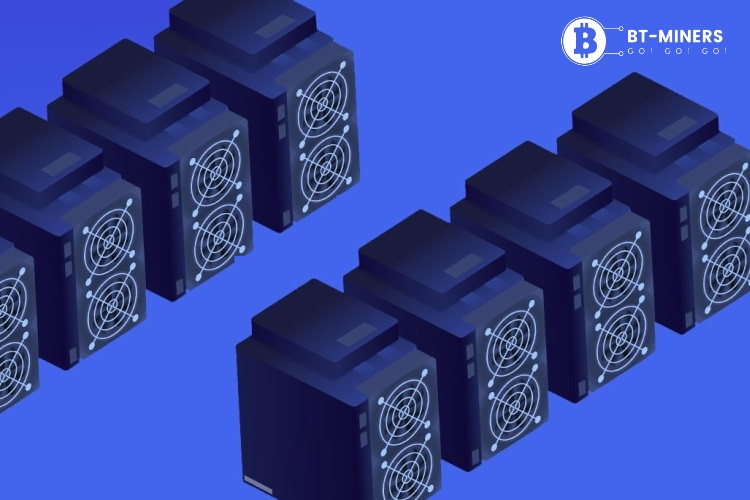Currently Empty: US$0.00

1. Bitcoin miners face survival test as halving: Bitfinex
The upcoming Bitcoin (BTC) halving in April 2024 and potential regulations pose an existential threat to independent Bitcoin miners already struggling to compete with large corporate mining operations, according to a Bitfinex report.
While publicly traded companies like Marathon Digital Holdings and Riot Blockchain have scaled rapidly thanks to Wall Street funding, smaller independent miners lack the capital to negotiate favorable energy deals or invest in cutting-edge mining hardware.
“For independent miners to remain viable, they will need to innovate and possibly collaborate,” Bitfinex analysts said in the report. “Mining pools, for instance, offer a way for smaller players to combine their computational power and share in the rewards.”
Focusing on niche markets not yet dominated by industrial-scale operations could also give independent miners breathing room. But their long-term sustainability likely hinges on “continuous innovation in mining technology and methodologies,” per the report.
As block rewards drop from 6.25 to 3.125 BTC per block this April, independent miners must slash costs or boost efficiency to stay profitable. Proposed US regulations that mandate carbon reductions could also increase operational expenses.
“This scenario paves the way for larger, publicly traded mining firms, which typically have greater capital reserves and resources to navigate regulatory landscapes, to dominate the industry,” Bitfinex analysts added.
The influx of Wall Street money has “significantly altered the incentive structure behind Bitcoin mining” in favor of corporate interests focused on shareholder returns over network security principles.
2. Bitcoin is “Overheating” For The First Time Ever Before Halving
Bitcoin, the world’s most valuable coin, is once again deviating from historical norms. According to an analysis by one crypto analyst, the coin is in the “overbought” territory of the Relative Strength Index (RSI) for the first time in the lead-up to halving. The RSI is a popular technical indicator analysts use to gauge the price momentum of traded instruments.

Bitcoin Overheating? RSI Stands Above 70
The analyst points out that the Bitcoin RSI on the monthly chart is currently above 70, indicating an overbought condition and overheating. This is a significant development as it’s the first time in Bitcoin’s history that this has happened before a halving.
The Bitcoin network is set to halve miner rewards in mid-April. This event, which occurs roughly every 200,000 blocks, will cut rewards distributed to miners by 50% from the current level of 6.125 BTC. Miners play a vital role in confirming transactions and maintaining network security.
The fact that Bitcoin prices appear to be “overheating” just before halving is net bullish for the coin. It suggests that prices are not only breaking from historical trends but also building strong momentum.
Besides the strong upside momentum, the analyst notes that Bitcoin now trades above a critical dynamic level on the monthly chart.
The confluence of these positive developments could explain why traders are upbeat. Most analysts agree that the coin will likely break higher in the weeks ahead, clearing the recent all-time high of around $73,800.
BTC Pinned Below $73,000 And Consolidating
Thus far, Bitcoin prices are firm, increasing as evident in the daily chart. After sharp contractions in the past few trading sessions, the welcomed reversal over the weekend lifted the coin towards the elusive $70,000 level and a previous all-time high.
However, judging from the candlestick arrangement in the daily chart, a break above $73,800 would likely catalyze more demand. So far, prices are moving sideways within a broad range despite signals of strength relayed from other indicators.
While some investors are bullish, expecting prices to rise, caution should prevail. A close above $74,000 would thrust Bitcoin into unchartered territory. Beyond this, the analyst uses technical indicators to make projections. These tools use historical parameters and lag. As such, they may not be as accurate and, thus, misleading in some instances.
3. Bitcoin Halving Is a ‘Show Me the Money’ Moment for Miners
With April’s “halving” set to cut mining rewards by half, Bitcoin miners are upgrading to more efficient mining machines, cutting costs, finding cheaper sources of power and exploring mergers and acquisition opportunities.
The notorious phrase from 1996’s “Jerry Maguire” movie is on the lips of investors watching the state of the Bitcoin mining market as it faces its next crunch point: April’s Bitcoin Halving.
Mining, an integral part of securing the bitcoin network, requires a lot of capital to operate profitably. And now, after a brutal crypto winter and with the upcoming halving next month, many investors have turned sour on what once was an outrageously profitable business, drying up capital for the miners.
To bring investors back and keep them on-board, miners will need to upgrade to more efficient mining machines, cut costs, have a prudent risk management strategy and participate in deal-making that will enhance shareholder value, industry observers say.
“I think the next evolution [for mining investors] is there’ll be a lot more scrutiny on how you’re deploying capital and what the return on that investment is for these companies,” said Asher Genoot, the new CEO of bitcoin mining firm Hut 8.
He added that any company “that is not able to execute on that [return on investment] will suffer because shareholders won’t trust them with money and you’ll have capital flowing to others, that people really trust and are willing to support.”
Gaining investors’ trust could be tough, but not impossible if a company knows which options to utilize correctly, Genoot said.
In the last bull market of 2021, investors poured money into miners who were able to show that they had invested money to grow their business — regardless of the capital cost. This led to miners buying assets at high prices and borrowing more debt than was serviceable.
When the bear market hit in the second half of 2022, shares of publicly-traded miners imploded, leading investors to drop the stocks altogether. Even now, as the digital assets market starts another bull run, investors are still shying away from the miners, starving the industry of capital it needs to stay profitable and grow their businesses.
The main concern among the investors is the risk the miners will face heading into April’s halving event: competing for the block reward that will be slashed in half. Many investors now hope to gain their bitcoin exposure through spot bitcoin exchange-traded funds (ETFs), which are less uncertain than bitcoin mining stocks.
Payback of efficiency
One of the first options miners can use to stay profitable when the halving cuts reward by half is to have mining machines that can consume less power but have higher computing ability i.e. more efficient rigs. Buying new generations of miners ahead of a potential post-halving bull market is crucial for miners to stay profitable, bitcoin mining equipment and hosting provider Blockware Solutions said in a research report.
“Miners who embrace the halving and capitalize on bear market prices for hardware stand to reap substantial rewards, with shorter ROI [return on investment] periods and enhanced profitability throughout the halving epoch,” the report said.
The miners have already started to deploy capital to upgrade their mining fleet, heading into the halving. Most recently, Riot Platforms (RIOT) said it spent nearly $100 million to buy new generations of MicroBT’s mining rigs to increase computing power while raising efficiency.
But just buying more efficient machines may not be enough for miners. A machine can be more efficient, but if it costs more, miners will need to evaluate if it is worth maintaining and running the older machines or buying new ones, Hut 8’s Genoot said, noting that miners need to consider “how quickly can you get your dollars deployed” when thinking about investing in new mining rigs.
Amanda Fabiano, founder of Fabiano Consulting and former head of mining at Galaxy, agrees with Genoot. It may make sense for some miners to continue to upgrade to newer model mining rigs, but a deeper dive into the cost of mining is needed to make that decision.
“If someone is on the mid-curve of the cost curve, they likely will continue to upgrade their fleet. If a miner has a low cost of electricity and can have some energy arbitrage, older gen machines aren’t a terrible idea,” she said.






 +1-813-820-0668
+1-813-820-0668 +971-800-012-0089
+971-800-012-0089 +91-22-5032-3009
+91-22-5032-3009 +44-333-015-6152
+44-333-015-6152 +61-2-8074-3443
+61-2-8074-3443